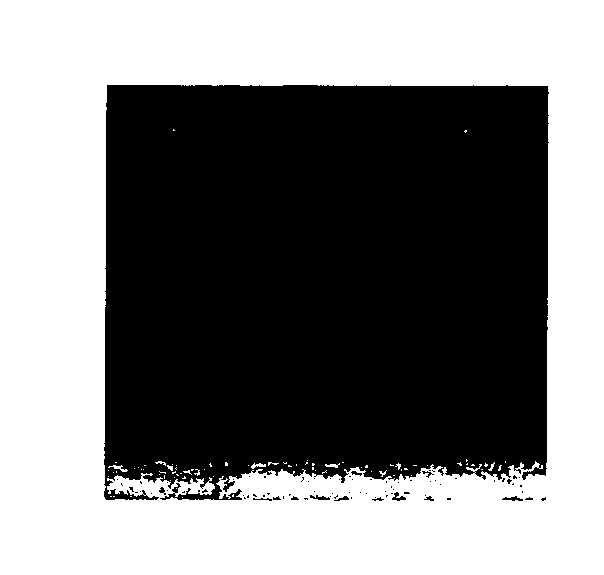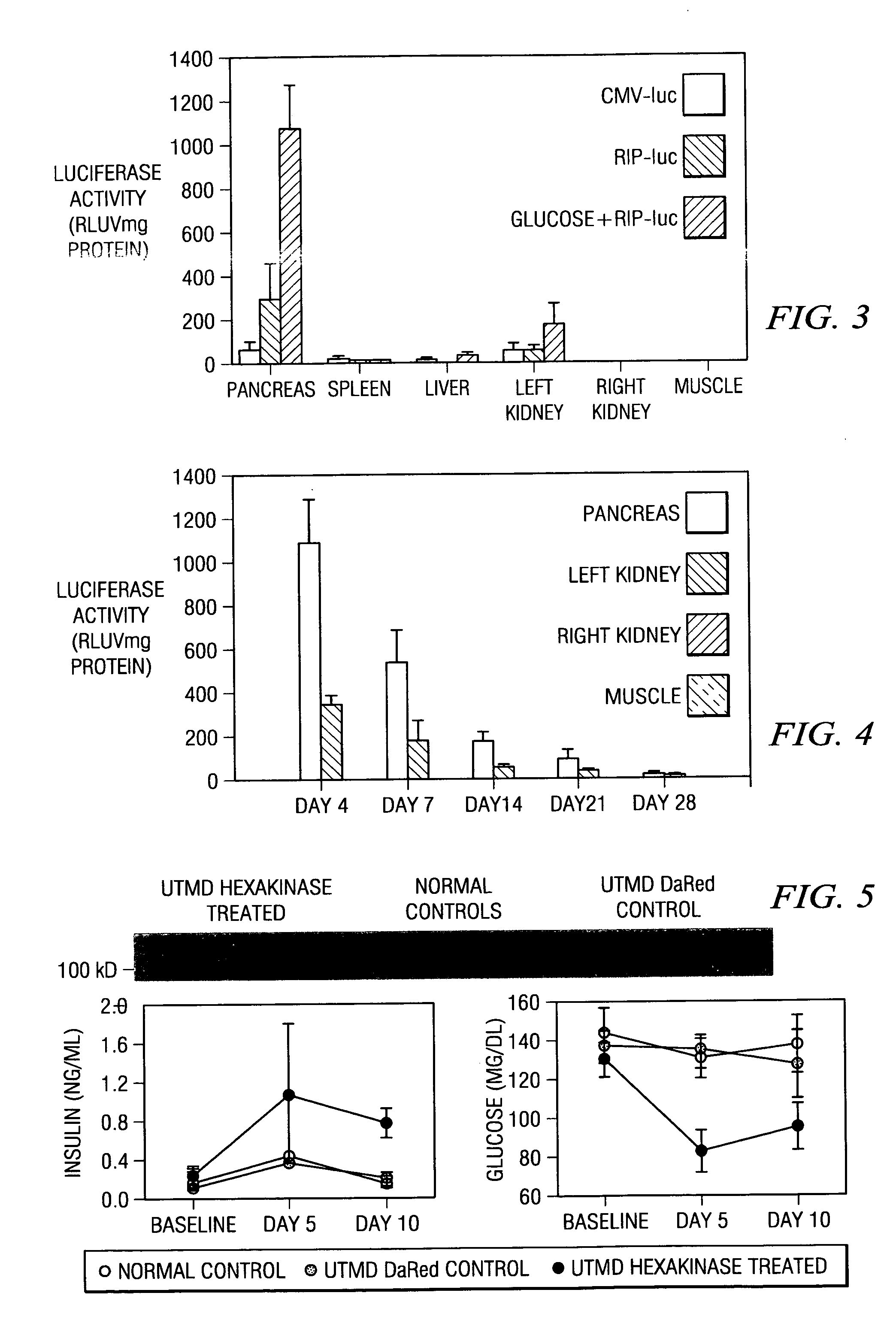Gene or drug delivery system
a technology of gene or drug delivery and delivery system, which is applied in the direction of drug compositions, genetic material ingredients, and disrupted materials, etc., can solve the problems of low in vivo efficiency of liposome delivery, low in vitro transfection efficiency, and limited transfection efficiency, so as to achieve greater efficiency
- Summary
- Abstract
- Description
- Claims
- Application Information
AI Technical Summary
Benefits of technology
Problems solved by technology
Method used
Image
Examples
example 1
[0065] Preparation of Cationic Liposome Solution. Loaded with Bioactive Ingredient. To prepare cationic liposome solution loaded with the plasmid DNA pCMV-luc, 50-100 microliters containing 2 milligrams of plasmid DNA was added just prior to use to 50 microliters of cationic liposome solution (Lipofectamine 2000; Invitrogen, Carlsbad, Calif.) and incubated for 10-20 minutes at room temperature. The resulting liposomes encapsulated the plasmid DNA and were roughly 250 nanometers in diameter. The liposomes can be stored at −20 degrees C. for later use.
example 2
[0066] Preparation of Microbubble Formula Containing Plasmid DNA. A microbubble formula (hereinafter referred to as “Formula 2”) that incorporated plasmid DNA pCMV-luc within the microbubble shell was prepared according to a modification of a previously described method of Unger et al. (Unger, et al. 1997. “Ultrasound enhances gene expression of liposomal transfection,”Invest Radiol 32:723-727; U.S. Pat. No. 6,521,211). Briefly, in a sealable tube, 250 microliters of 2% 1,2-dipalmitoyl-sn-glycero-3-phosphocholine (C16) dissolved in PBS and prewarmed to 42 degrees C. was mixed with 1 milligram plasmid DNA pCMV-luc and incubated for 30 minutes at 40 degrees C. PBS was added as needed to achieve a total final volume of 500 microliters. The tube was then filled with octafluoropropane gas and shaken vigorously for 20 seconds in a dental amalgamator (VIALMIX®; Briston-Myers Squibb Medical Imaging, Inc., North Billerica, Mass.). The liquid subnatant comprising unattached DNA pCMV-luc was r...
example 3
[0067] Preparation of Neutrally Charged Lipid Microbubbles Loaded with Nanosphere Cationic Liposomes Containing Plasmid DNA. A neutrally charged lipid microbubble loaded with a cationic liposome / DNA complex (hereinafter referred to as “Formula 1”) was prepared as follows. To a tube containing 50 microliters of the loaded cationic liposome / DNA complex prepared as given in Example 1 was added 250 microliters of 2% 1,2-dipalmitoyl-sn-glycero-3-phosphocholine (C16) (prewarmed to 42 degrees C.) and 5 microliters of 10% albumin solution and 50 microliters of glycerol. The mixture was mixed well but gently using a pipette. PBS was added as needed to achieve a total final volume of 500 microliters. The tube containing the mixture was then filled with octafluoropropane gas and shaken vigorously in a dental amalgamator (VIALMIX®) for 15-35 seconds at 0-4 degrees C. During this process, the plasmid DNA was first encapsulated within the cationic liposomes, and then the loaded cationic liposomes...
PUM
| Property | Measurement | Unit |
|---|---|---|
| diameter | aaaaa | aaaaa |
| size | aaaaa | aaaaa |
| temperature | aaaaa | aaaaa |
Abstract
Description
Claims
Application Information
 Login to View More
Login to View More - R&D
- Intellectual Property
- Life Sciences
- Materials
- Tech Scout
- Unparalleled Data Quality
- Higher Quality Content
- 60% Fewer Hallucinations
Browse by: Latest US Patents, China's latest patents, Technical Efficacy Thesaurus, Application Domain, Technology Topic, Popular Technical Reports.
© 2025 PatSnap. All rights reserved.Legal|Privacy policy|Modern Slavery Act Transparency Statement|Sitemap|About US| Contact US: help@patsnap.com



